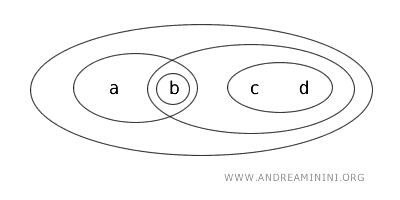Sets Neither Open Nor Closed
In topology, a set that is neither open nor closed does not fulfill the requirements of either category.
This phenomenon can occur in a topology where the set is neither defined as an open set nor is it the complement of one.
Therefore, the set is also not a closed set.
Note: Such sets might be hard to visualize within the familiar topology of real numbers. However, they are completely feasible in more complex topological structures. A practical example would help clarify this concept.
A Practical Example
Consider the set X={a,b,c,d} and topology T, which defines the following open sets: {b}, {a,b}, {c,d}, {b,c,d}, {a,b,c,d}, and Ø.

Let’s examine the subset {b,c} of the set X.
- The set {b,c} is not an "open set" because topology T does not explicitly define it as such.
- Similarly, {b,c} is not the complement of any open set within topology T, and thus it is not a "closed set" either.
In conclusion, according to topology T, the set {b,c} is neither open nor closed.
And so forth.
Quick Answers
- In the topology of real numbers, it seems quite common to encounter sets like [0, 1), which are neither open nor closed. Is that correct?
The interval \([0, 1)\) in the topology of real numbers (with the standard topology) is:- Not Open: An interval is open if every point inside it has a neighborhood fully contained within the interval. In \([0, 1)\), the point \(0\) does not have such a neighborhood because every neighborhood of \(0\) includes points less than \(0\), which are not part of the interval.
- Not Closed: An interval is closed if it contains all its limit points. The point \(1\) is a limit point of \([0, 1)\), but \(1\) is not included in the interval, so \([0, 1)\) is not closed.
